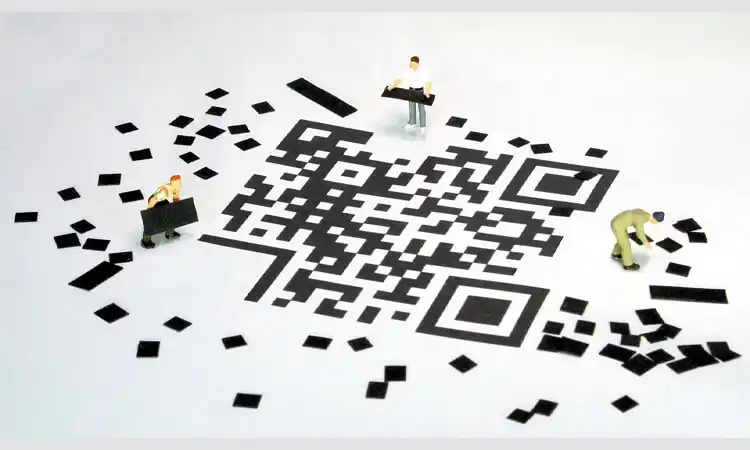QR codes have become ubiquitous in recent years. However, they have their limitations. With technological advancements, alternative technologies like NFC, RFID, BLE, SnapTag, and Image Recognition have emerged as viable QR code alternatives.
What is a QR Code?
QR code stands for Quick Response code. It was first designed in 1994 by a Japanese company called Denso Wave. The two-dimensional barcode can store up to 7,089 characters of data, including text, URLs, and other information. QR codes have become increasingly popular in recent years for various applications. These include marketing, advertising, payments, and inventory management.
Read More: Unveiling the Power of QR Code Labels
Uses of QR Code
- App downloads,
- Directing customers to CarFax reports on used cars,
- And driving traffic to websites via direct mail postcards.
QR codes have numerous applications in the business world and everyday life. In the realm of marketing, they are frequently used by companies for various purposes, such as:
Businesses can easily integrate QR codes into their marketing materials to:
- Display company location,
- Link to social media accounts,
- Share discounts or promotions,
- Allow customers to send texts or emails,
- And encourage them to join mailing lists.
These codes act as a bridge between traditional print collateral and digital marketing. It allows companies to offer a more convenient and accessible experience to customers.
Outside the business world, QR codes are also commonly used to simplify tedious or time-consuming tasks. For instance:
- They can be used to link restaurant menus,
- They provide a way to RSVP to wedding invitations,
- They enable museums to share artwork descriptions,
- They can list performance lineups at music festivals,
- And even offer taxi phone numbers in bar bathrooms.
By making information more accessible, QR codes save time and effort for both companies and individuals. Companies can forego lengthy print collateral, and individuals can avoid the hassle of typing out web addresses or phone numbers. As a convenient tool, QR codes are highly versatile and offer a powerful solution for various needs.
Limitations of QR Codes
While QR codes have many advantages, they also have their limitations. One of the primary issues is that not everyone knows how to use them. A 2019 survey conducted by Statista found that only 34% of respondents in the United States were familiar with QR codes, while only 16% had scanned one in the past month. This suggests that QR codes are not as widespread as some might think. Businesses should not rely solely on them for marketing and promotional purposes.
Another limitation of QR codes is their reliance on smartphones and internet connections. While most people in developed countries own smartphones, some still do not. Additionally, some people may not have access to the internet. The internet is necessary to scan QR codes and access their content.
QR codes also have a limited amount of space to store information. In comparison, they can hold up to 7,089 characters of data. This may not be sufficient for certain applications that require more extensive information. Additionally, QR codes can become damaged or dirty, making them unreadable by scanning devices.
Finally, there are security concerns associated with QR codes. Cybercriminals have been known to create fake QR codes that lead to phishing websites or malware downloads. Users should exercise caution when scanning QR codes and only from trusted sources.
5 QR Code Alternatives
While QR codes have advantages, it’s important to consider QR code alternative technologies that can provide similar benefits. By exploring these alternative to qr code, businesses can create engaging and effective marketing campaigns. Businesses can use it to reach a broader audience and provide a better user experience.
Do you know what near-field communication (NFC) is? If you’ve ever used Google Wallet or Apple Pay, you’re already familiar with it. NFC technology allows users to perform actions by simply tapping or touching their enabled smartphone against an NFC tag. This could be anything from opening a webpage to accessing the App Store.
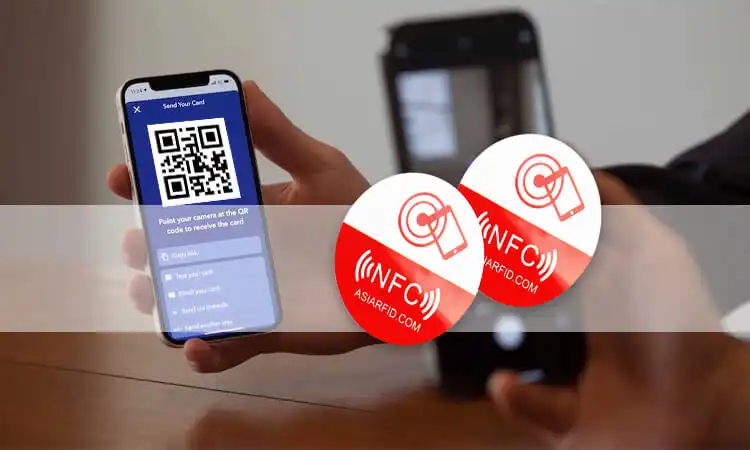
Compared to QR codes, NFC tags offer a much more user-friendly experience as they don’t require manual scanning through an app. NFC technology is already built into the latest smartphones, so users don’t need to worry about downloading an app or setting anything up. Moreover, NFC tags are smaller than QR codes, which means marketers can add them to labels, smart posters, or print ads without compromising their design.
NFC tags offer businesses endless creative possibilities for their marketing campaigns. For instance, Ralph Lauren launched a highly successful campaign that involved placing vinyl NFC posters on display windows at a luxury department store. Customers could simply tap their smartphones against the posters to access a popup with a map of the store and directions to the new Ralph Lauren collection. This creative use of NFC tags demonstrates how businesses can incorporate this technology into their marketing ideas. It provides customers with a more seamless and interactive shopping experience.
Radio-frequency identification (RFID) tags are small chips equipped with antennas that wirelessly transmit data to RFID readers. They track, manage inventory, and enhance supply chain management. Unlike QR codes and NFC tags, RFID tags don’t require a line of sight to transmit data.
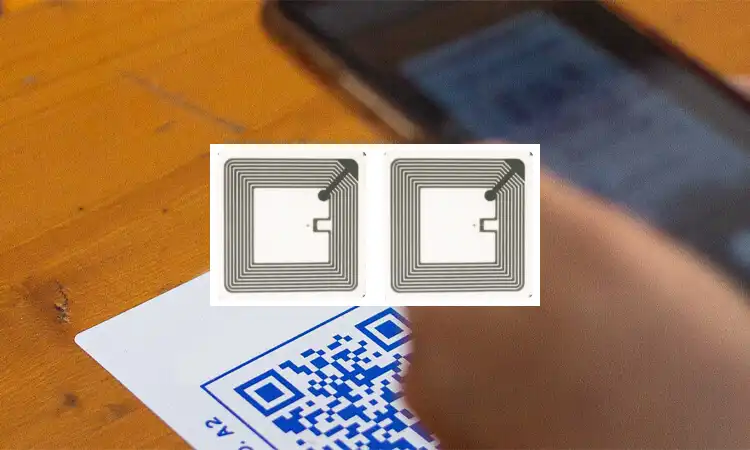
RFID tags are widely used in the retail industry. For instance, Walmart uses RFID tags to track inventory levels and store product locations. The technology has been so effective that Walmart reduced its out-of-stock inventory by 30% after implementing RFID.
RFID tags are also used in other applications, such as access control, toll collection, and contactless payments. In access control systems, RFID tags grant access to secure areas, such as office buildings or parking garages. In toll collection systems, RFID tags are used to charge drivers automatically for using toll roads. In logistics and transportation, RFID tags can be used to track shipments. You also can use it to monitor the condition of goods and improve supply chain efficiency.
If you’re looking for an alternatives to QR code that won’t clash with your design, you might want to consider SnapTags. In contrast, QR codes can be unsightly and disruptive to your branding. SnapTags offer more seamless integration with your visuals.
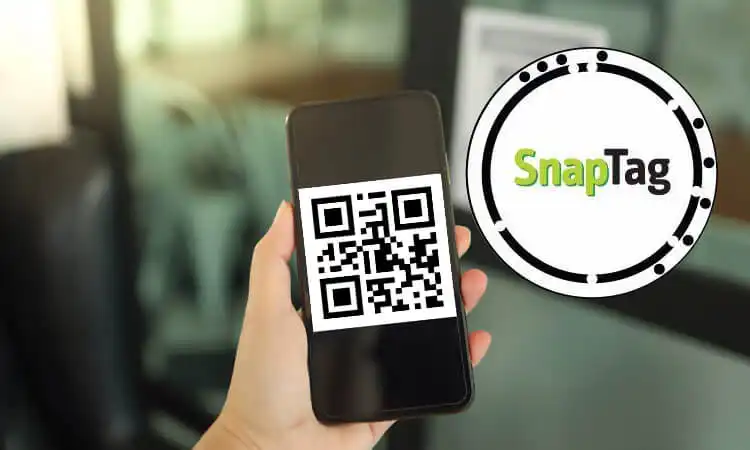
SnapTags function similarly to QR codes as scannable barcodes, but with an added benefit. Instead of being limited to a blocky square shape, SnapTags can turn any image into a barcode. SnapTags create a “code ring” around the image. This is a black-and-white ring with dots that can be customized to create thousands of unique codes and combinations. Users receive the marketing message by scanning the SnapTag with an app or taking a picture and texting it to a designated number.
One of the key benefits of SnapTags is that they can blend in more easily with your marketing collateral. You can create a more subtle and cohesive design by incorporating a SnapTag into your logo or other graphic elements. And because SnapTags can be scanned using an app or by texting a designated number, they’re just as user-friendly as QR codes.
Convenient QR Code Alternative – Bluetooth Beacons
Bluetooth beacons, also known as Apple’s iBeacons, are a type of proximity advertising tool that can enhance the in-store shopping experience for customers. These small-scale network transmitters emit Bluetooth low-energy signals that are picked up by nearby smartphones. It can trigger notifications such as location-specific marketing offers.
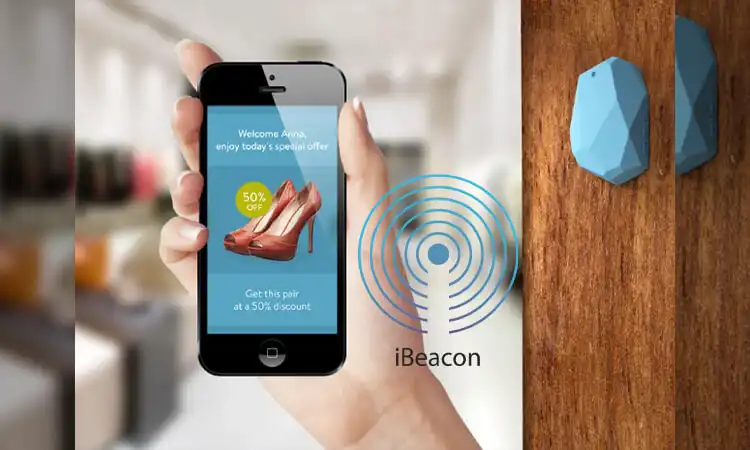
Unlike QR codes and other promotional tools, Bluetooth beacons do not require customers to interact physically with designated spots. Instead, the beacons activate when customers are nearby. For example, the British grocery store Waitrose implemented iBeacons to send welcome messages to customers when they entered the store. It can send value promotions when they walk down specific aisles. Similarly, Australian retailer Woolworths used Bluetooth beacons to notify store workers when a click-and-collect customer approached. It reduces the customer’s wait time.
If you want to use mobile marketing to bridge your online and offline promotional efforts. You can consider experimenting with Bluetooth beacons or other alternative to qr codes. With the potential for personalized and location-based notifications, the possibilities for enhancing the customer experience are endless.
Smart QR Alternative – Image Recognition
Image recognition technology offers a unique opportunity for marketers to enhance the mobile experience for users. With image recognition, the image of an object can work as an activation code. Developers can easily integrate image recognition technology into branded mobile apps. Users can simply “scan” the object within the app, similar to taking a photo. This technology is convenient and offers an innovative experience for users.
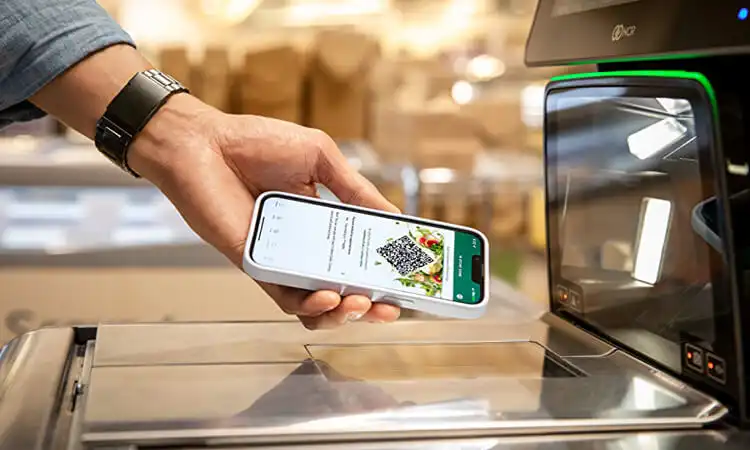
In addition to providing convenience, some stores have implemented scan-to-shop features. With this feature, customers can scan items they plan to repurchase using their mobile app and add them to their shopping cart. This allows them to quickly and easily restock items they regularly use, such as baby diapers. This saves them from having to wade through a store or website.
The Commonwealth Bank of Australia has also creatively utilized image recognition technology. They created a campaign that leveraged this technology to help potential home buyers. Customers could scan a home for sale in their mobile banking app and receive information about the property’s price, taxes, and mortgage options. This innovative approach helped simplify the home-buying process and made it easier for consumers to make informed purchasing decisions.
One of the best things about image recognition technology is its versatility. Brands can develop additional features like augmented reality to create even more immersive customer experiences. With the integration of augmented reality, the image can be transformed into an interactive experience. It takes customer engagement to a new level.
What is the Future Development of QR Codes?
QR codes have come a long way since their creation in the 1990s and continue evolving. In comparison, some may argue that NFC tags and other technologies have surpassed the use of QR codes. They still have their place in the digital world.
In the future, QR codes are likely to become even more user-friendly and customizable. Researchers can develop QR codes that can be scanned from greater distances without compromising quality. It would allow for more creative applications. In addition, incorporating colors and logos into QR codes has already begun, with companies using them to reinforce branding.
QR codes may also be used more frequently in the realm of mobile payments. With the rise of contactless payment options, QR codes could be used as a way for customers to scan and pay for their purchases quickly. This makes them without having to take out their credit card or phone.
We may also see QR codes integrated with augmented reality (AR) and virtual reality (VR) technologies in the coming years. This could allow for more immersive and interactive experiences, such as scanning a QR code to access a virtual showroom or to play a game.
Overall, the future development of QR codes is promising. At the same time, they may face competition from newer technologies. Their versatility and convenience ensure that they will remain a useful tool for businesses and individuals alike.
While QR codes have been widely used, they also have their limitations. Fortunately, alternative technologies like NFC and RFID tags offer businesses more efficient and creative options. As technology continues to evolve, it will be interesting to see how these technologies will continue to shape the future of marketing and consumer engagement.


